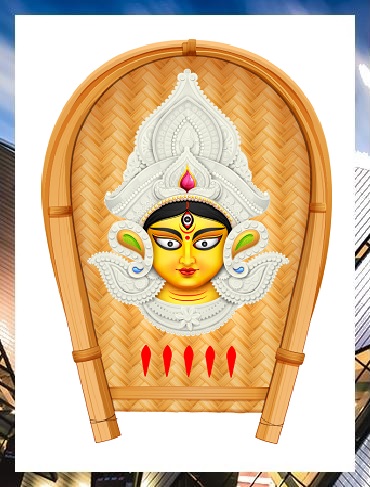About Durga Puja

Durga Pujo for the Bengalis has always been much more than a festival. We soak ourselves in this explosion of wondrous food, pandal hopping, music and cultural evenings, in the honour and joy of getting our Maa Durga back to her paternal home. The preparation of this carnival weaved on for an entire year. The carnival itself marks the time of happy tides.
Kolkata can never be outdone in its greatness of the festive fervour, the cultural extravaganza that no Bengali ever wants to miss and every non-Bengali wants to experience at least once.
It is the busiest time of the year for the Durga Puja organising committees in the city. As the days to the festival near, there is a mad rush among the members to finalise the nitty-gritty of the upcoming festival to welcome Maa Durga. The pandal set-up, theme selection, cultural programmes like poetry recitation, songs, dance, painting, drama, etc. are planned for several months before the Puja.
Then there is our dhaak and dhunuchi dance. This is not only a ritual dance, it’s our way to indulge in the aura of Maa Durga. As a part of everyday aarti, men and women with dhaaks create an ambience of celebration and sheer happiness. Everyone dancing in perfect harmony; the rhythm expressing the joy. The excitement is palpable, the enthusiasm infectious.
The last day of her stay is called Vijay Dashami when she prepares to leave her parent’s house for Kailash, the abode of her husband. The Vijaya Dashami celebration begins with Matri Baron and Shindur Khela performed by women. The colourful ritual is mesmerising on this felicitous day.
Undoubtedly the most emotional moment for everyone in Durga Puja is bhashaan, when every Bengali has to part with Maa Durga again, so we chant "aaschhe bochhor aabar hobe", which means Maa Durga will visit us next year again. The ending of the Durga Puja feels like parting with a member of the family after five days of praying, feasting and merry-making. Actually, Durga puja isn’t just about this great carnival, but about how everyone feels a part of a large family united by tradition.



